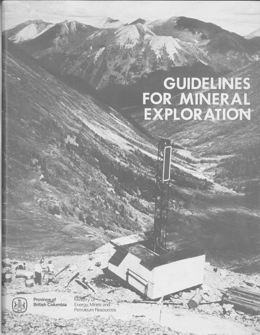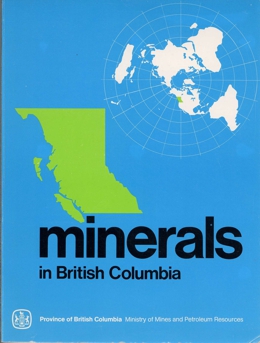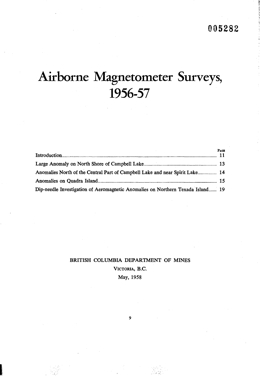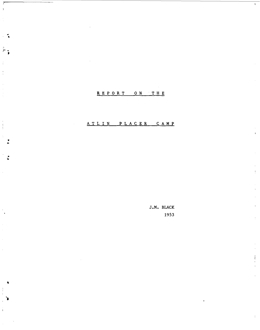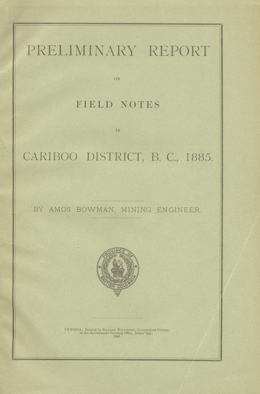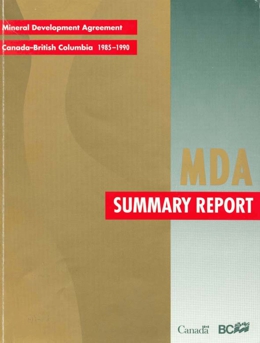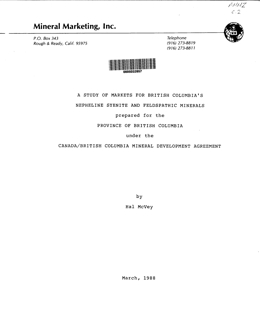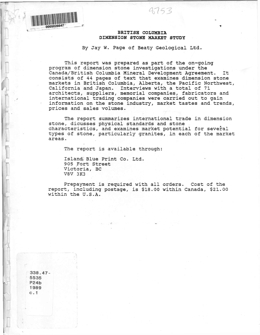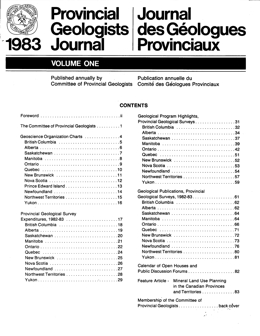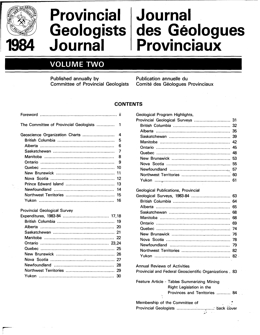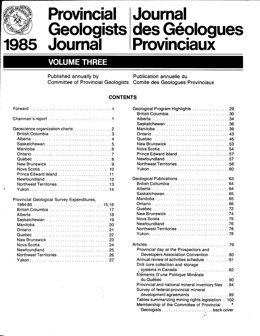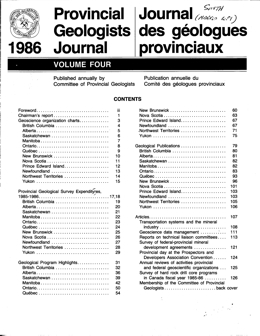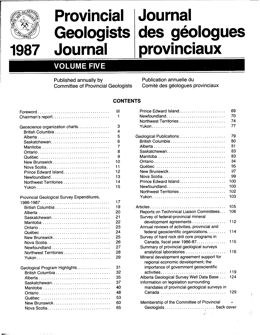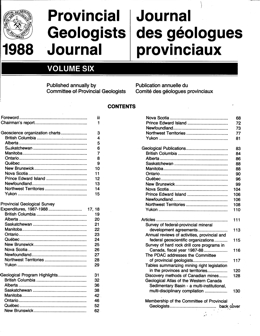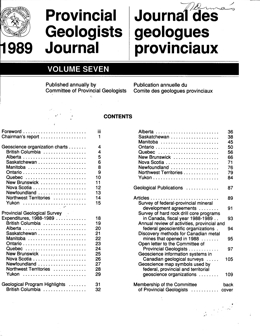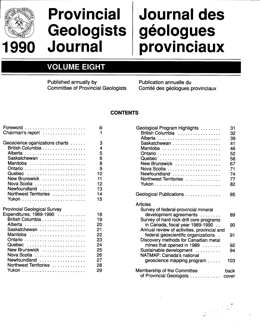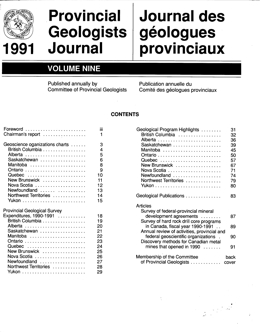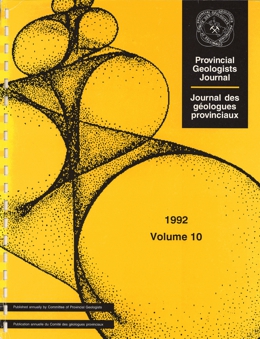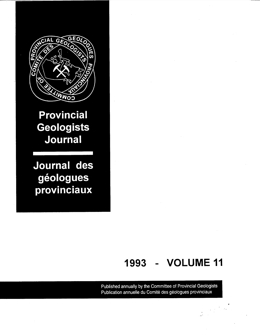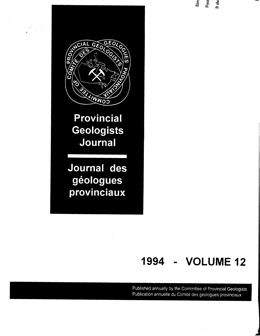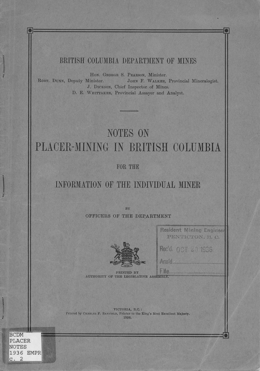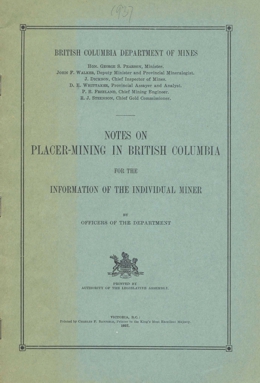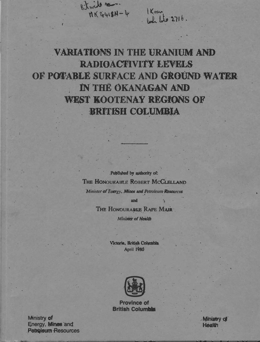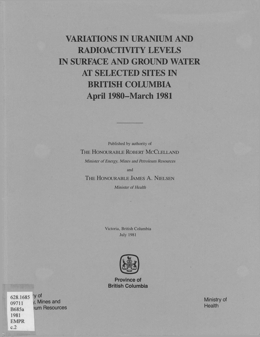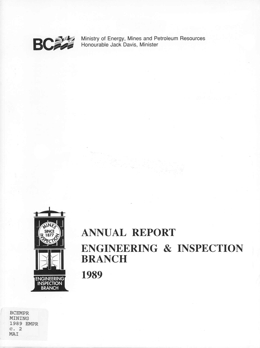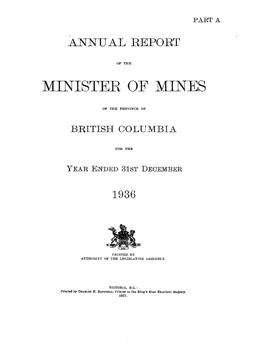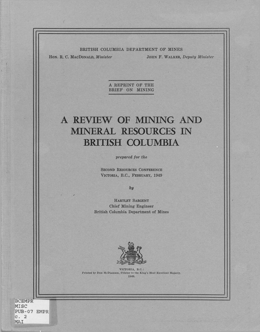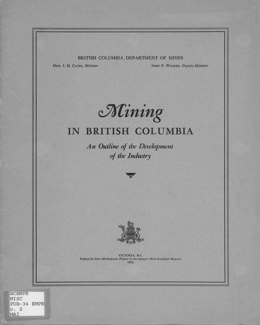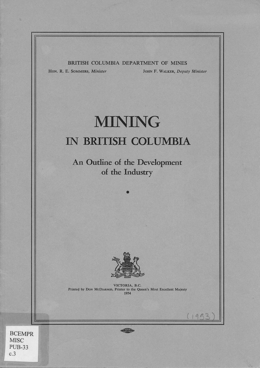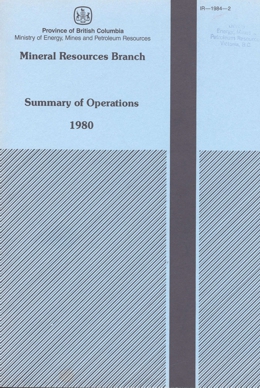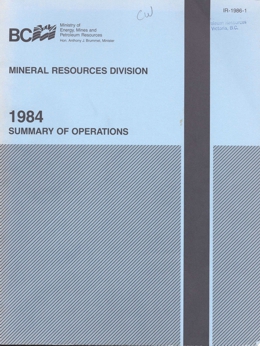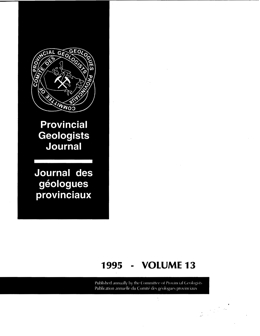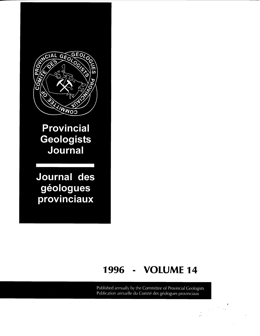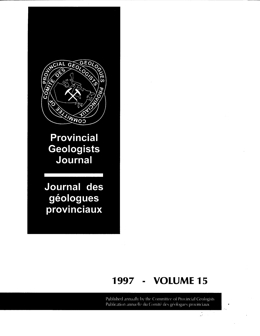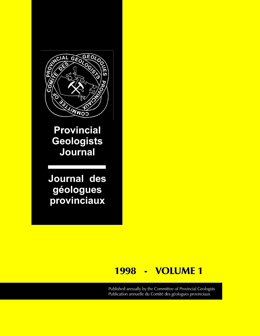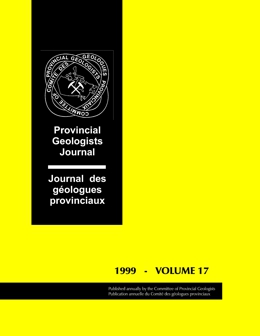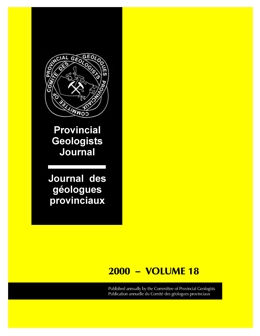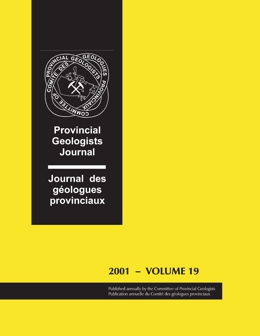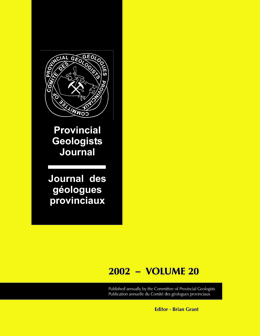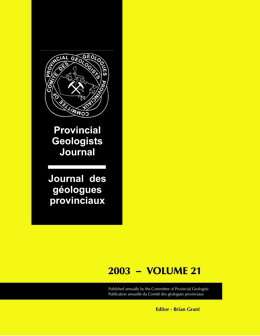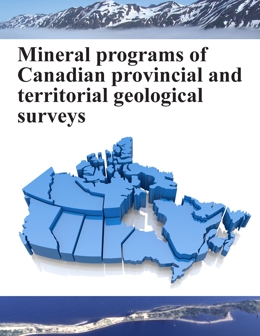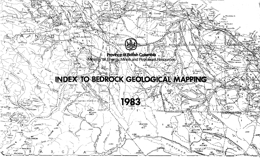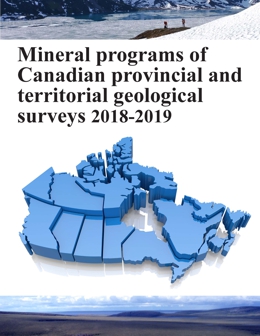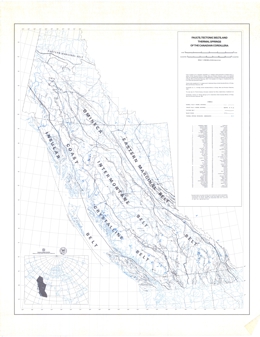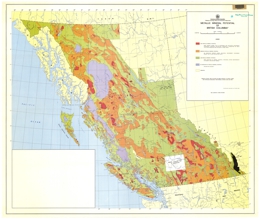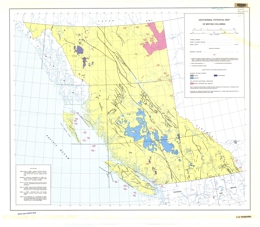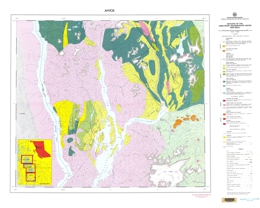Miscellaneous Reports and Publications
Between 1886 and 1982, several reports were released in the Miscellaneous Report, Miscellaneous Publication, and Miscellaneous Map series, all of which have been discontinued.
Miscellaneous Report | Miscellaneous Publication | Miscellaneous Map
Miscellaneous Report
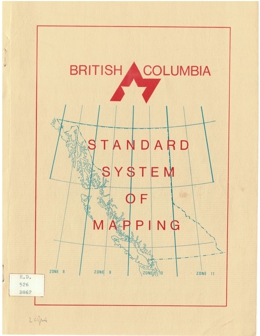
Department of Environment
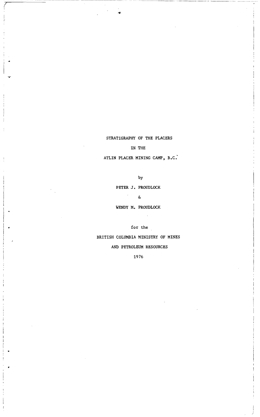
P.J. Proudlock and W. M. Proudlock
Three weeks in August 1976 were spent in the Atlin Placer Camp by Ministry of Mines and Petroleum Resources Geologists, PeterProudlock and Wendy Proudlock, examining the stratigraphy of the placer deposits. Auriferous channel gravels, with ages between 100,000 years B.C. and 10,000 B.P. occur on McKee, Pine, Spruce, Bull, Birch, Snake, Ruby, Boulder, Otter, Wright and Wilson Creeks, and the O'Donnel River; of these only the first six creeks were being worked in 1976. The gravels are usually fairly well compacted, rest on a very weathered bedrock surface, are capped by a horizon of large boulders and covered to some depth by tills and glaciofluvial sands and gravels. The gold recovered is usually of jewelry quality - small flattened nuggets up to a quarter ounce in weight are common with occasional larger ones; fine gold does not make up a large proportion of the gold recovered. Early glacial history probably played a large role on the distribution of the placers. A single source is not predicted, and many small gold bearing quartz vein systems are known.
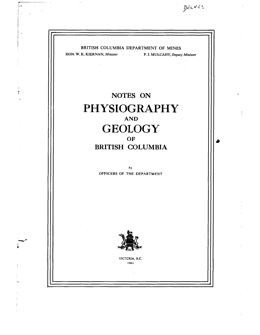
Officers of the Department
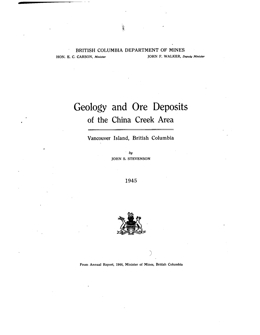
J.S. Stevenson
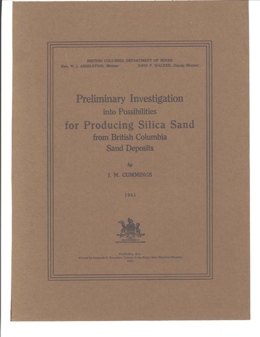
J.M. Cummings
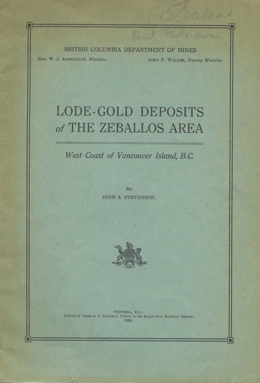
J.S. Stevenson
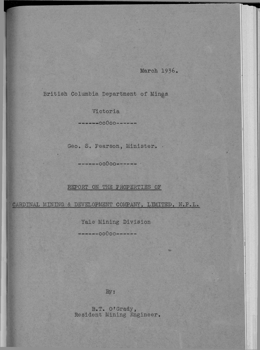
B.T. O'Grady
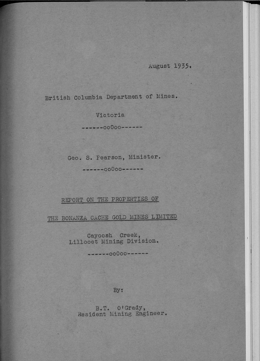
B.T. O'Grady
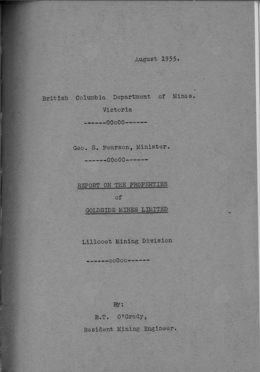
B.T. O'Grady
Miscellaneous Publications
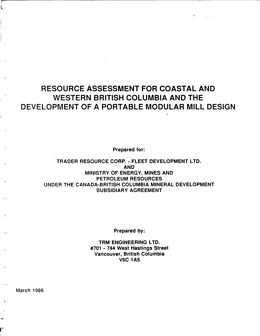
TRM Engineering Ltd.
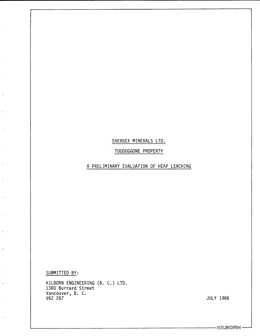
Energex Minerals, Toodoggone Project
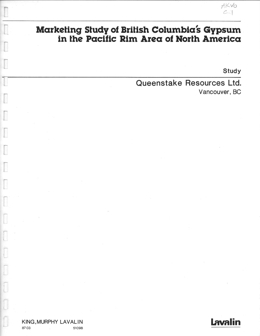
Queenstake Resources Ltd.
BC Trade
Not available
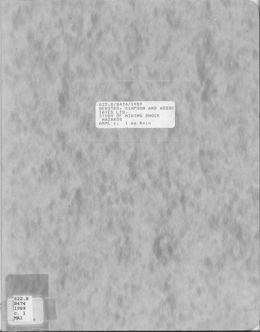
Bensted, Simpson & Associates
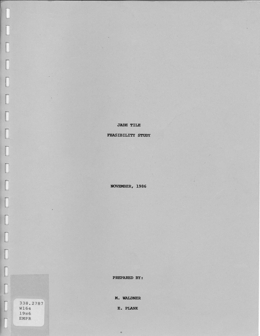
M. Waldner and E. Plank
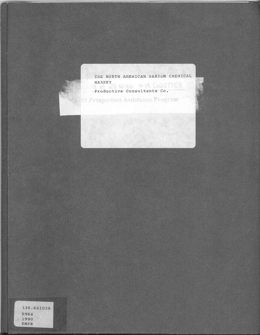
Productive Consultants Ltd.
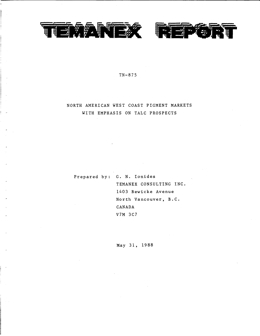
Temanex Incorporated
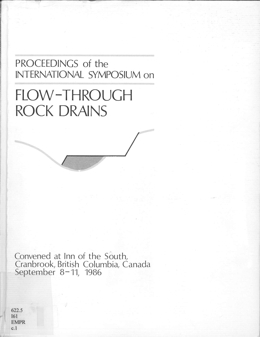
the B.C. Technical and Research Committee on Reclamation
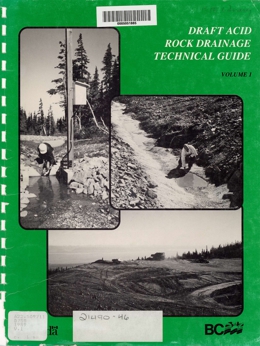
Steffen Robertson and Kirsten (B.C.) Inc., Norecol Environmental Consultants, and Gormely Process Engineering
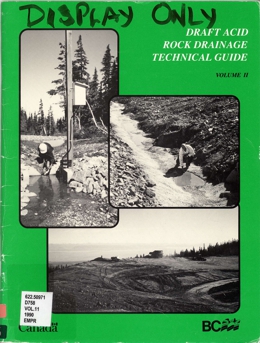
Steffen Robertson and Kirsten (B.C.) Inc., Norecol Environmental Consultants, and Gormely Process Engineering
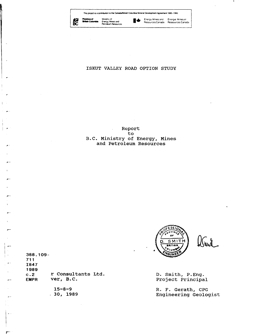
D. Smith, R.F. Gerath
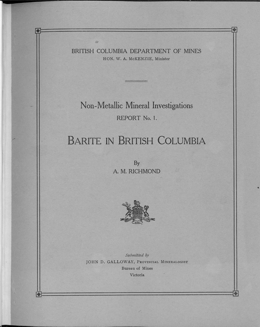
A.M. Richmond
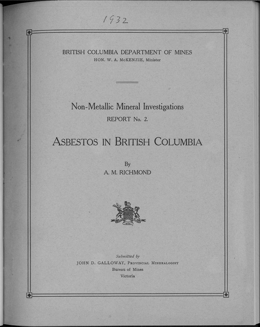
A.M. Richmond
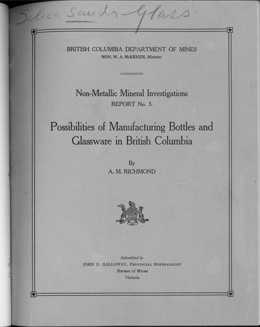
A.M. Richmond
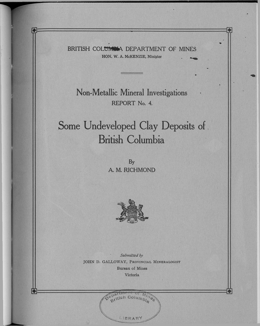
A.M. Richmond
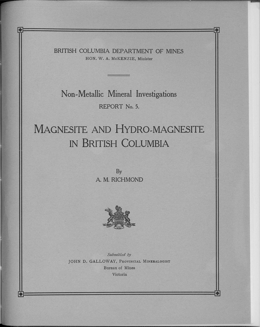
A.M. Richmond
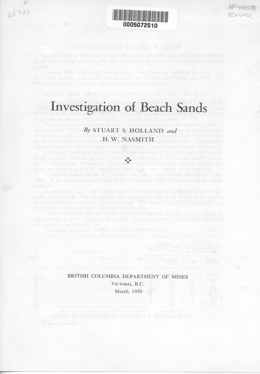
S.S. Holland and H.W. Nasmith
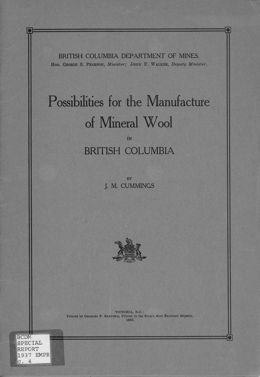
J.M. Cummings
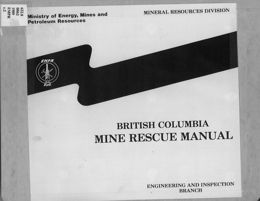
supersedes mine rescue publications: Paper 1977-2 and Paper 1981-4
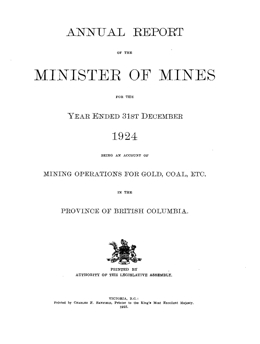
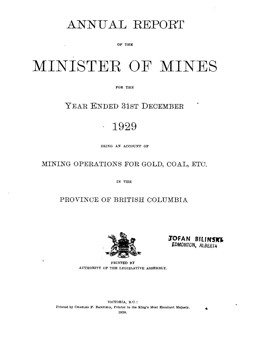
B.T. O'Grady and A.M. Richmond
Contained in Annual Report 1929
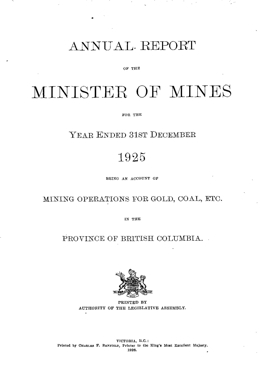

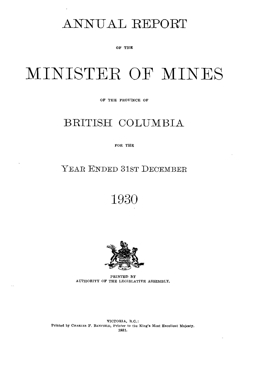


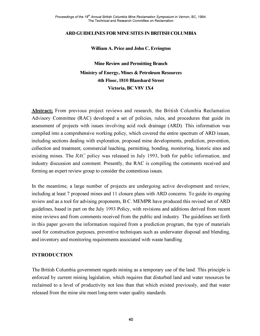
W.A. Price and J.C. Errington
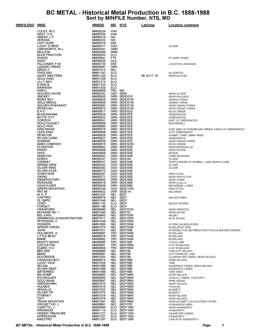
BC METAL is a historical metal production database for British Columbia, containing information for 1452 mines that operated within the province from 1888 to 1988. The database contains production statistics as reported on the Annual Census of Mines. The Microsoft Access database (BCMETAL.MDB) consists of 2 tables: the BCMETAL_ID table, containing mine attributes, including mine id and name, mining division, NTS map, latitude/longitude, descriptor location, historical name changes, MINFILE number, if known, and comments; and the BCMETAL_PROD table, containing metal production data by year. The production table includes amount of ore mined and milled, type of product, comments and amount of gold, silver, copper, lead, zinc, molybdenum, and other (cadmium, iron, mercury, nickel, tin and tungsten) produced.
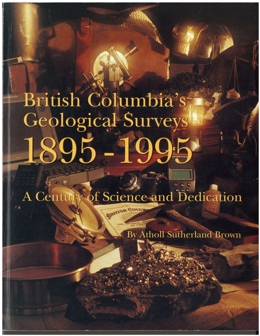
A. Sutherland Brown
This is the definitive history of an important branch of the provincial government and an introduction to the history of mining in British Columbia. It will serve as THE reference for years to come It will keenly interest historians, geologists, engineers, surveyors, members of the mining community and anyone curious about the historical development of British Columbia.
"This is a masterly account, written by a distinguished and respected insider, of a very technical institution with necessarily close links with government and business. The writing is uncommonly dense, concise, compact, and erudite. " Dr. Richard Mackie - B.C. Historian
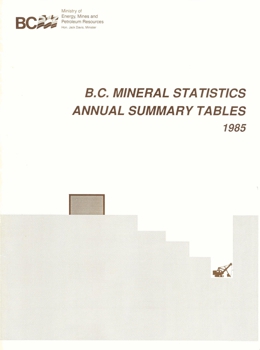
The statistics of the mineral industry are collected, compiled, and tabulated for this report by the Mineral Policy and Evaluation Branch of the Mineral Resources Division.
In the interests of uniformly and to avoid duplication of effort, beginning with the statistics for 1925, Statistics Canada and the provincial ministries have co-operated in collecting and processing mineral statistics.
Producers of metals, industrial minerals, structural materials, coal, and petroleum and natural gas are requested to submit returns in duplicate on forms prepared for use by the province, by Statistics Canada and by Energy, Mines and Resources in Ottawa.
As far as possible, the organizations follow the same practice in processing the data. Differences between the values of production published by the two Organizations arise mainly because Ottawa uses average prices considered applicable to the total Canadian production, whereas the British Columbia Mining Statistician uses prices considered applicable to British Columbia production.
Peat, classified as a fuel by Statistics Canada, is not included in the British Columbia statistics of mineral production, being regarded as neither a fuel nor a mineral.
The statistics of the petroleum industry are collected, compiled, and tabulated for this report by the Energy Resources Division. They are included here for comparative purposes.
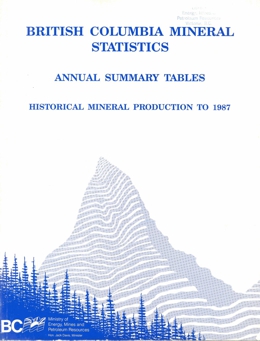
Statistics on the British Columbia mineral industry are collected, compiled and tabulated for publication in this report by the Mineral Statistics Section, Mineral Policy Branch, of the Mineral Resources Division.
Petroleum industry statistics are collected and compiled by the Energy Resources Division and are included here for comparative purposes. The annual summary tables reflect "actual final" totals and supercede all figures previously released. As such, they represent final statistics of record and are not subject to further revision, except in the case of previously unreported extraordinary adjustments, or in the event that reporting errors in previous years' data become known.
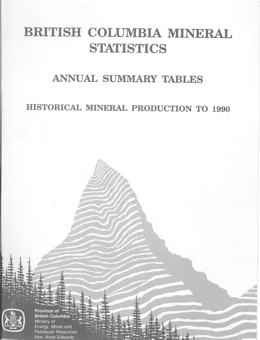
Statistics on the British Columbia mineral industry are collected, compiled and tabulated for publication in this report by the Mineral Statistics Section, Mineral Policy Branch, of the Mineral Resources Division.
Petroleum industry statistics are collected and compiled by the Energy Resources Division and are included here for comparative purposes.
Annual summary tables in this publication reflect "actual final" totals and supercede all figures previously released. As such, they represent final statistics of record and are not subject to further revision, except in the case of previously unreported extraordinary adjustments, or in the event that reporting errors in previous years' data become known.
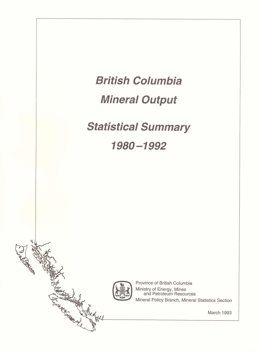
This publication is intended to update a series of provincial statistics on British Columbia's mineral industry production dating back to the 1800's. Its focus is primarily historical and summarizes annual statistics for the most recent 12 year period 1980 through 1992. While the most recent annual tables available are based up on the 1991 Annual Census of Mines, estimates for 1992 have been included in most tables to make these data as timely as possible.
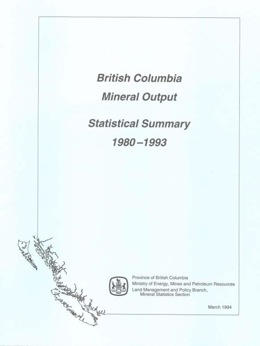
This publication is intended to update a series of provincial statistics on British Columbia's mineral industry. Its focus is primarily historical and summarizes annual statistics for the years 1980 through 1993. While the most recent annual tables available are based up on the 1992 Annual Census of Mines, estimates for 1993 have been included in most tables to make these data as timely as possible.
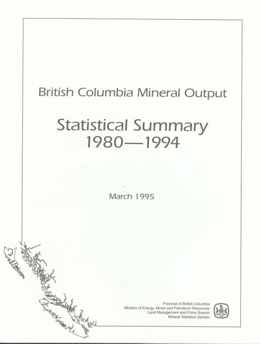
This publication is intended to update a series of provincial statistics on British Columbia's mineral industry. Its focus is primarily historical and summarizes annual statistics for the years 1980 through 1994. While the most recent annual tables available are based up on the 1993 Annual Census of Mines, estimates for 1994 have been included in most tables to make these data as timely as possible.
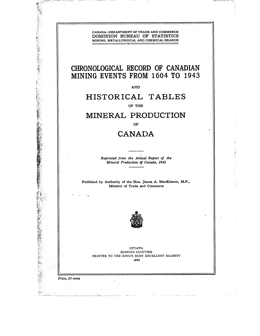
Reprinted from the Annual Report of the Mineral Production of Canada, 1942
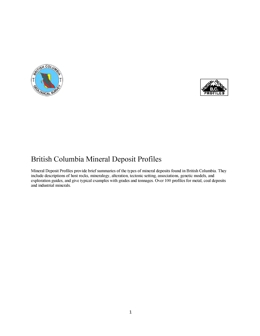
Mineral Deposit Profiles provide brief summaries of the types of mineral deposits found in British Columbia. They include descriptions of host rocks, mineralogy, alteration, tectonic setting, associations, genetic models, and exploration guides, and give typical examples with grades and tonnages.
The British Columbia Geological Survey (BCGS) started a mineral potential assessment in 1992 utilizing deposit models for defining and characterizing mineral and coal deposits which exist, or for which favourable geological environments could exist, in the province. These deposit models are being used to classify known deposits and occurrences, to guide experts in their estimation of the number of possible undiscovered mineral deposits, and to group deposits to allow compilation of representative grade and tonnage data.
The BCGS formerly relied on mineral deposit models published by the United States Geological Survey (USGS) and Geological Survey of Canada (GSC). However, it became apparent that some models needed revision, and that there are British Columbia deposit types lacking published models. Hence we developed a set of mineral deposit profiles using the Branch's considerable in-house expertise, with assistance from economic geologists of the GSC, USGS, industry and academia.
These deposit models are called "deposit profiles" to distinguish them from other published descriptions. The deposit profiles were completed in three volumes describing metallic, coal, and industrial minerals and gemstone deposits.
- Volume 1 - Metallics and Coal (BCMEMPR Open File 1995-20)
- Volume 2 - Metallic Deposits (BCMEMPR Open File 1996-13)
- Volume 3 - Industrial Minerals and Gemstones (BCMEMPR Open File 1999-10)
These three volumes were combined in a 2018 compilation volume, which has been proceeded by GeoFile 2020-11.
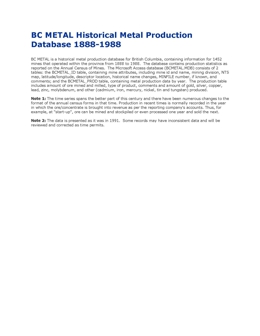
BC METAL is a historical metal production database for British Columbia, containing information for 1452 mines that operated within the province from 1888 to 1988. The database contains production statistics as reported on the Annual Census of Mines. The Microsoft Access database (BCMETAL.MDB) consists of 2 tables: the BCMETAL_ID table, containing mine attributes, including mine id and name, mining division, NTS map, latitude/longitude, descriptor location, historical name changes, MINFILE number, if known, and comments; and the BCMETAL_PROD table, containing metal production data by year. The production table includes amount of ore mined and milled, type of product, comments and amount of gold, silver, copper, lead, zinc, molybdenum, and other (cadmium, iron, mercury, nickel, tin and tungsten) produced.
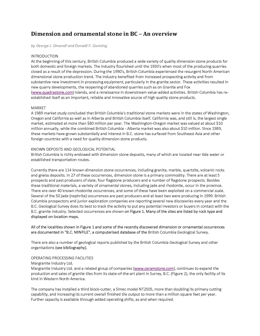
G. Simandl and D.F. Gunning
At the beginning of this century, British Columbia produced a wide variety of quality dimension stone products for both domestic and foreign markets. The industry flourished until the 1930's when most of the producing quarries closed as a result of the depression. During the 1990's, British Columbia experienced the resurgent North American dimensional stone production trend. The industry benefited from increased prospecting activity and from substantive new investment in processing equipment, particularly in the granite sector. British Columbia has re-established itself as an important, reliable and innovative source of high quality stone products.
Miscellaneous Maps
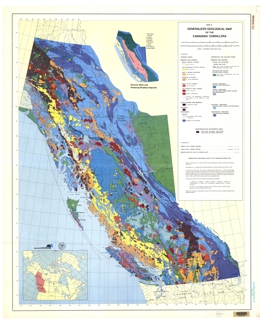
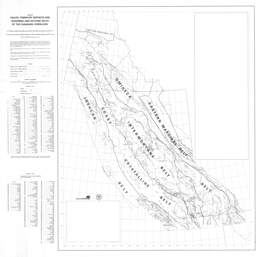
R.H. Seraphim, V.F. Hollister, E.V. Jackson, S.H. Pilcher, J.J. McDougall and A. Sutherland Brown
to accompany CIM Special Volume 15
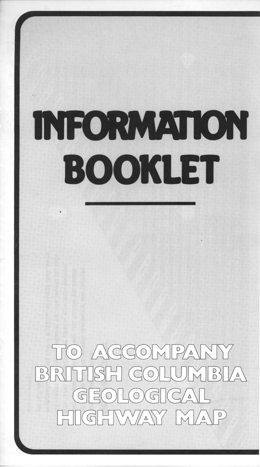
E.V. Jackson
See GeoFile 2007-1 and GeoFile 2012-9 for updated versions
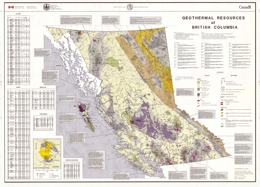
B.D. Fairbank and R.L. Faulkner
includes index of hot springs and bore holes, 1992, GSC Open File 2526

